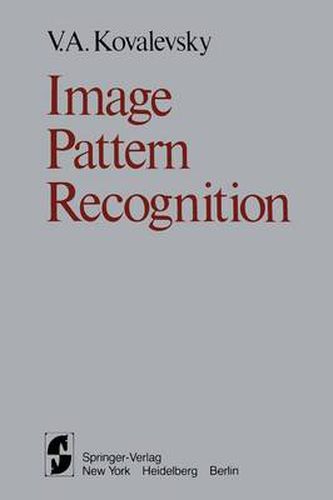Readings Newsletter
Become a Readings Member to make your shopping experience even easier.
Sign in or sign up for free!
You’re not far away from qualifying for FREE standard shipping within Australia
You’ve qualified for FREE standard shipping within Australia
The cart is loading…






This title is printed to order. This book may have been self-published. If so, we cannot guarantee the quality of the content. In the main most books will have gone through the editing process however some may not. We therefore suggest that you be aware of this before ordering this book. If in doubt check either the author or publisher’s details as we are unable to accept any returns unless they are faulty. Please contact us if you have any questions.
During the last twenty years the problem of pattern recognition (specifically, image recognition) has been studied intensively by many investigators, yet it is far from being solved. The number of publications increases yearly, but all the experimental results-with the possible exception of some dealing with recognition of printed characters-report a probability of error significantly higher than that reported for the same images by humans. It is widely agreed that ideally the recognition problem could be thought of as a problem in testing statistical hypotheses. However, in most applications the immediate use of even the simplest statistical device runs head on into grave computational difficulties, which cannot be eliminated by recourse to general theory. We must accept the fact that it is impossible to build a universal machine which can learn an arbitrary classification of multidimensional signals. Therefore the solution of the recognition problem must be based on a priori postulates (concerning the sets of signals to be recognized) that will narrow the set of possible classifications, i.e., the set of decision functions. This notion can be taken as the methodological basis for the approach adopted in this book.
$9.00 standard shipping within Australia
FREE standard shipping within Australia for orders over $100.00
Express & International shipping calculated at checkout
This title is printed to order. This book may have been self-published. If so, we cannot guarantee the quality of the content. In the main most books will have gone through the editing process however some may not. We therefore suggest that you be aware of this before ordering this book. If in doubt check either the author or publisher’s details as we are unable to accept any returns unless they are faulty. Please contact us if you have any questions.
During the last twenty years the problem of pattern recognition (specifically, image recognition) has been studied intensively by many investigators, yet it is far from being solved. The number of publications increases yearly, but all the experimental results-with the possible exception of some dealing with recognition of printed characters-report a probability of error significantly higher than that reported for the same images by humans. It is widely agreed that ideally the recognition problem could be thought of as a problem in testing statistical hypotheses. However, in most applications the immediate use of even the simplest statistical device runs head on into grave computational difficulties, which cannot be eliminated by recourse to general theory. We must accept the fact that it is impossible to build a universal machine which can learn an arbitrary classification of multidimensional signals. Therefore the solution of the recognition problem must be based on a priori postulates (concerning the sets of signals to be recognized) that will narrow the set of possible classifications, i.e., the set of decision functions. This notion can be taken as the methodological basis for the approach adopted in this book.